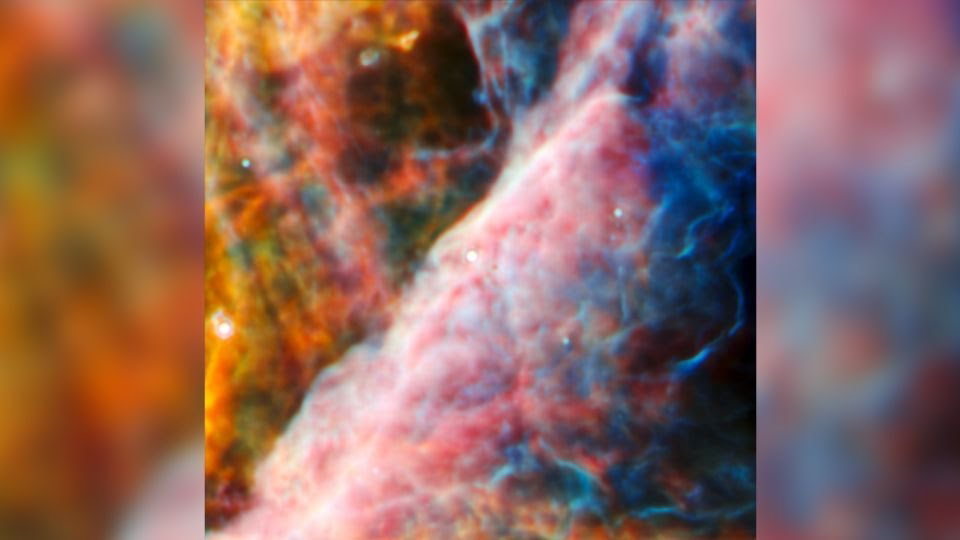James Webb Space Telescope Detects Carbon Molecules in Early Universe
The James Webb Space Telescope Reveals the Orion Bar in Stunning Detail
A team of astronomers using the James Webb Space Telescope (JWST) has detected carbon molecules in a galaxy that is 13.4 billion light-years away. This means that the molecules were present just 300 million years after the Big Bang.
The molecules, called polycyclic aromatic hydrocarbons (PAHs), are a type of organic molecule that is thought to be a precursor to life. They are made up of carbon atoms that are bonded together in rings.
The discovery of PAHs in the early universe is a significant finding. It provides new evidence that the building blocks of life may have been present very early on in the history of the universe. This could mean that life could have arisen more easily than previously thought.
The PAHs were detected by the JWST's Mid-Infrared Instrument (MIRI). MIRI is designed to detect infrared light, which is invisible to the human eye. Infrared light can penetrate dust and gas, which makes it ideal for studying the early universe.
The discovery of PAHs in the early universe is a major step forward in the search for life in the universe. It suggests that the building blocks of life may have been present very early on in the history of the universe, and that life may have arisen more easily than previously thought.
The next steps in the search for life in the universe will involve further study of the PAHs that have been found in the early universe. Astronomers will want to determine if these PAHs are actually the building blocks of life, or if they are simply a by-product of other chemical processes.
Astronomers will also want to search for other signs of life in the early universe. They will look for evidence of water vapor, organic molecules, and other compounds that are thought to be necessary for life.
The search for life in the universe is a long and challenging process. However, the discovery of PAHs in the early universe provides new hope for the search. It suggests that the building blocks of life may be more common than previously thought, and that life may have arisen more easily than we once thought.
©️ Rocky Mountain Dispatch 2023



Comments
Post a Comment